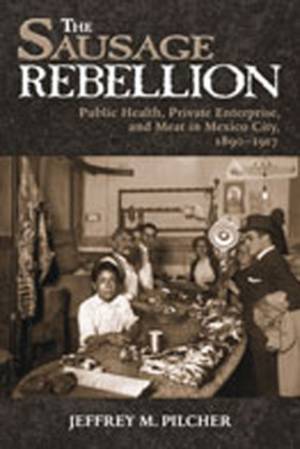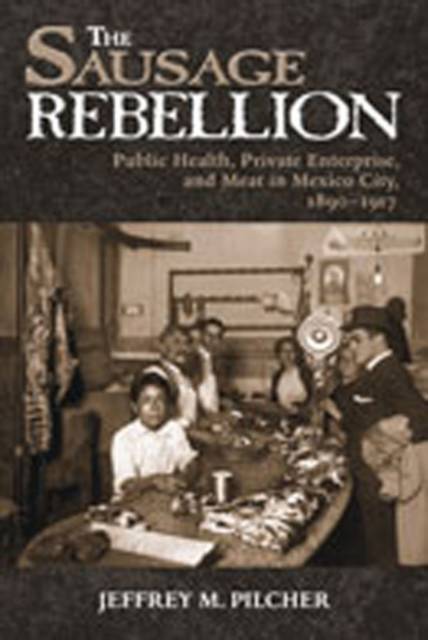
- Afhalen na 1 uur in een winkel met voorraad
- Gratis thuislevering in België vanaf € 30
- Ruim aanbod met 7 miljoen producten
- Afhalen na 1 uur in een winkel met voorraad
- Gratis thuislevering in België vanaf € 30
- Ruim aanbod met 7 miljoen producten
The Sausage Rebellion
Public Health, Private Enterprise, and Meat in Mexico City, 1890-1917
Jeffrey M PilcherOmschrijving
One of the great food fads of the 1980s, fajitas, brought widespread acclaim to Tex-Mex restaurants, but this novelty was simply the traditional Mexican method of preparing beef. Hispanic carne asada, thin cuts of freshly slaughtered meat cooked briefly on a hot grill, differed dramatically from thick Anglo-American steaks and roasts, which were aged to tenderize the meat. When investors sought to import the Chicago model of centralized meatpacking and refrigerated railroad distribution, these cultural preferences for freshness inspired widespread opposition by Mexican butchers and consumers alike, culminating in a veritable "sausage rebellion."
Through a detailed examination of meat provisioning, this book illuminates the process of industrialization in the final two decades of the Porfirio Díaz dictatorship and the popular origins of the Revolution of 1910 in Mexico City. Archival sources from Mexico and the United States provide a unique perspective on high-level Porfirian negotiations with foreign investors. The book also examines revolutionary resistance, including strikes, industrial sabotage, and assassination attempts on the foreign managers. Unlike the meatpacking "Jungle" of Chicago, Mexican butchers succeeded in preserving their traditional craft.
Specificaties
Betrokkenen
- Auteur(s):
- Uitgeverij:
Inhoud
- Aantal bladzijden:
- 256
- Taal:
- Engels
Eigenschappen
- Productcode (EAN):
- 9780826337962
- Verschijningsdatum:
- 1/05/2006
- Uitvoering:
- Paperback
- Formaat:
- Trade paperback (VS)
- Afmetingen:
- 162 mm x 229 mm
- Gewicht:
- 399 g

Alleen bij Standaard Boekhandel
Beoordelingen
We publiceren alleen reviews die voldoen aan de voorwaarden voor reviews. Bekijk onze voorwaarden voor reviews.











